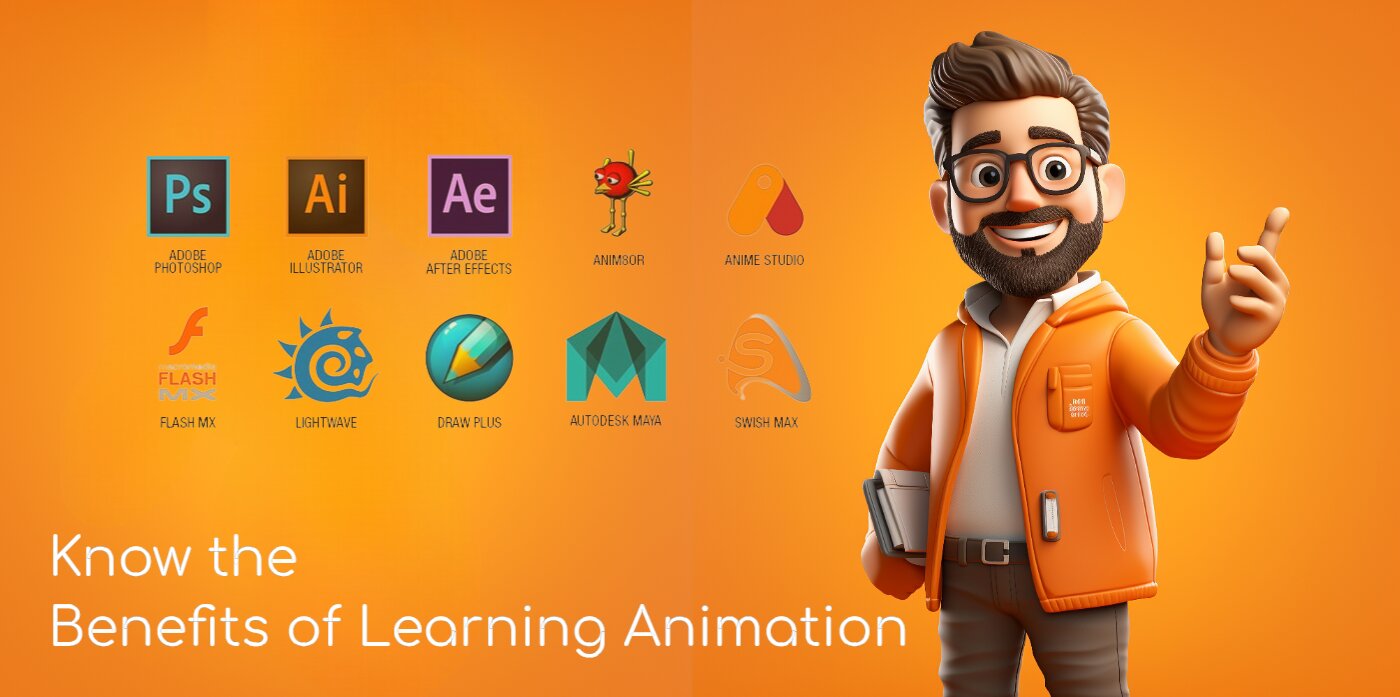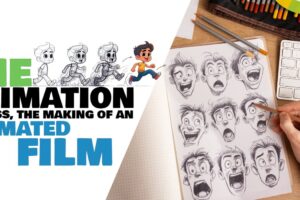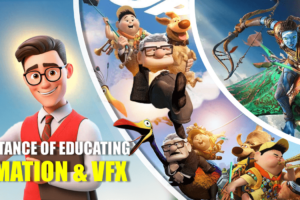
The Benefits of Learning Animation
For many people, creating animation is not just a career, but a passion for life. The satisfaction of seeing your ideas come to life on screen and the joy of entertaining and inspiring others through your work can be immensely fulfilling. Studying animation offers many benefits, both personally and professionally. Let us now discuss the main advantages and benefits of studying animation course;
Key Benefits / Advantages of Animation;
-
Creative Expression
Animation allows you to show off your creativity. The creativity in you and the passion for creation you develop can depict any person, place, or story you want. Through this, your ways of self-expression will have no bounds at all.
-
Versatility
Regarding animation skills, they are easily transferable to all kinds of industries, such as the film industry, TV sector, advertising, gaming, web designing, and sometimes icons used in education and medical fields. Of its flexibility, a wide range of fields will be available. The pursuit of passion in animation can land you in numerous, highly-paid job opportunities.
-
Collaboration
Animation projects are mostly accomplished through team efforts. The teamwork is not limited to just artists, designers, and writers but also, the producers. In the animation industry, the successful execution of projects has a huge impact on teamwork. This leads to the strengthening of communication and interpersonal skills, both of which are required in almost every professional setting.
-
Technical Proficiency
The animation classes not only train you to work with a variety of software but helps you a lot in developing your technical skills. With such skill set in great demand nowadays and being handy in any industry outside animation, you can be assured of being there in the job market for the long time to come.
-
Problem-Solving Skills
The part of animating always brings challenges either technical or creative. Hands-on experience enriches you with practical skills and also enhances creativity. Animation develops problem-solving skills which is a key soft skill requirement for your career.
-
Portfolio Building
From the very beginning of your course till the end of the year, you’ll build a portfolio illustrating your most successful creativity. The importance of a strong portfolio for being hired in the world of animation can’t be emphasized enough – it helps your skills and creative approach be recognized by future employers or clients.
-
job opportunities
With the more and more profitability of entertainment media, games, advertising, and online content creation belts, skilled animators are needed to meet the demands. Persons having the idea of being in animation can sponsor gratifying job professions as character animators, motion graphics designers, visual effects artist, and many others.
-
Global Industry
Animation is a field that unites people internationally and set up possible collaborations with studios from around the world as well as with clients. Such a wide view can enlarge your horizons and, in addition, open you to new cultures or ancient traditions.
-
Continuous Learning
Updating never a halt in this matter, animation also creates an evolution with new technologies and methods. The study of animation gives you the tools and relates to the future variability that you may come across, and you will always adjust to everything with the growth mentality of a lifelong student.
Points to Check Before Taking an Animation Course;
Before enrolling in an animation course, it’s essential to consider several factors to ensure you make the most out of your investment and learning experience. Here are some key points to check before taking an animation course:
-
Course Curriculum:
Carefully go through the course’s syllabus. To make sure its members acquire all the vital dimensions of animation, focus on principles of animation, software center of gravity (e.g. Adobe Creative Suite, Blender, Maya, and so on), storytelling, character design, and animation techniques.
-
Faculty Credentials:
Investigate the reliability and the teaching experience of the ones that are going to teach you. When a professional explains their thought process in plain language and creates ways for colleagues to connect, it boosts engagement in the process.
-
Reputation of the Institution:
Research the school’s reputation, which might tell you a lot about its degree. Factors like accreditation, the destiny of its alumni in the job market, and partnerships with relevant industries should be considered.
-
Facilities and Resources:
Verify what labs and software are available, and how many copies you can get, and if there is a library with enough resources. Investment in most modern equipment coupled with the usage of first-rate software tools should be included in the practical course.
-
Student Work Showcase:
Consider diverting yourself to peruse other students’ assignments. It also allows you to know the standards and technical skills that employers expect learners to possess at the end of the training.
-
Job Placement Assistance:
Know the availability of job placement services the academy maintains and the partnerships with related industries. An effective animation course that prepares students for the industry should contain resources to help with internship and employment search post-graduation.
-
Networking Opportunities:
Whether the course provides a chance for networking with professionals from the industry during activities including workshops, events, or lectures is something you should check beforehand. Developing your networks and links with the animation industry may prove to be valuable for whoever aspires to career growth.
-
Flexibility and Mode of Delivery:
Analyze the degree of flexibility in the training schedule and the delivery mechanism mode (in class, online, or a mixture of both). Adopt a format most suitable for your lifestyle and other responsibilities. Create your own intended response now! Education plays a pivotal role in shaping our future and fostering social progress.
-
Cost and Financial Aid:
If there’s financial aid or scholarships available, it’s a good idea to think about them when looking at the cost of the course. Summarize all finances including tuition fees, resources required, and living expenses (if needed).
-
Reviews and Testimonials:
Students often share their experiences on different platforms such as various online review sites and social media. They don’t just post the pros or the cons but sometimes they give recommendations.
-
Your Career Goals:
Think about your professional objectives and how you plan to achieve them with the help of this course. Select a school with differentiated programs that offer specialization tracks or course focus if you want to be more competitive and have your aim a specific field of animation.
-
Trial or Introductory Classes:
Taking some time to try attending sample/demo classes or introductory workshops is a nice way to find out something about the teaching methods and curriculum offered by the school before signing up with an institution.
Make sure to bring together all available resources at your disposal along with considering your views and objectives to come up with an informed decision that will be a great help in selecting an animation course. This may include researching the subject thoroughly before making an ultimate decision. Overall, studying animation provides a combination of technical skills, creative outlets, and career opportunities that make it a rewarding pursuit for aspiring artists and storytellers.



